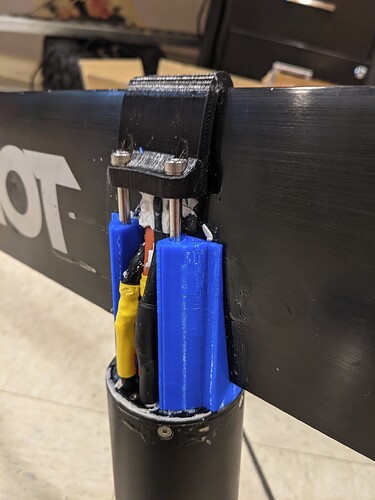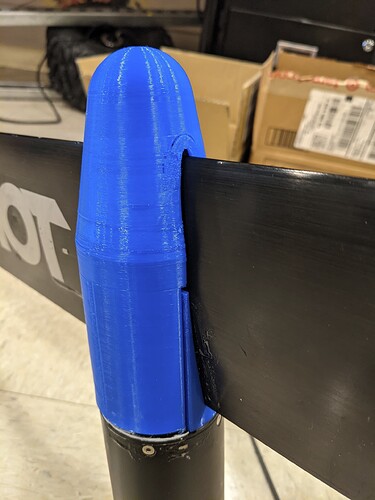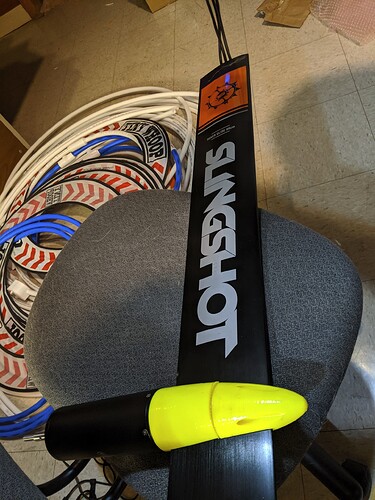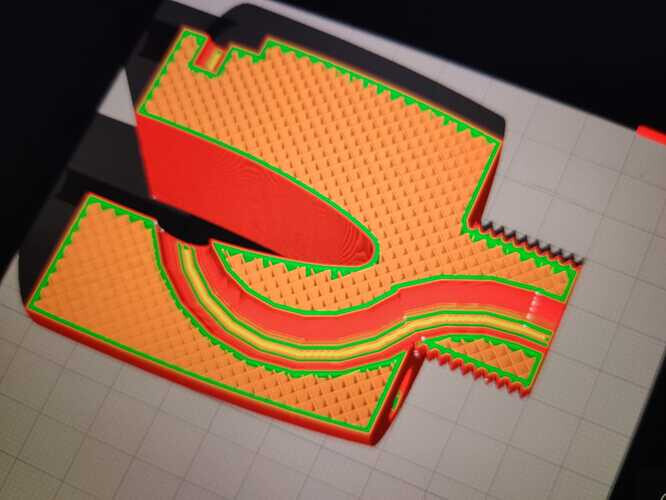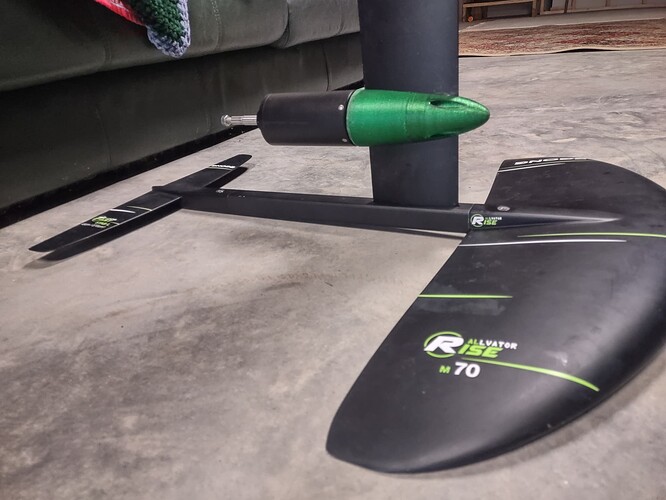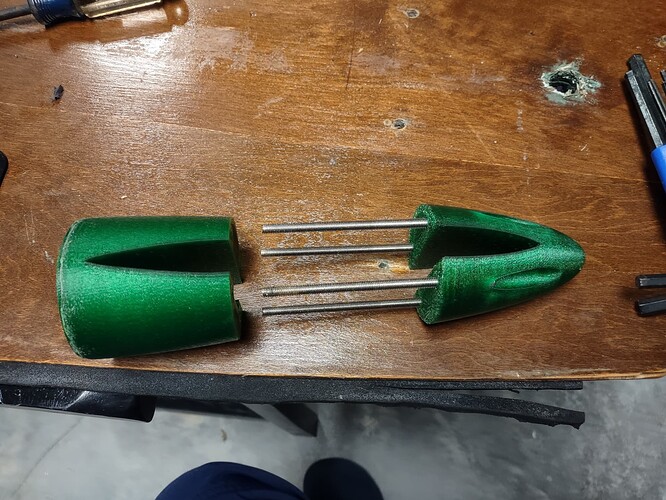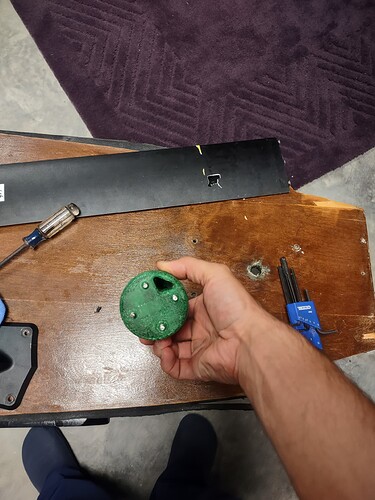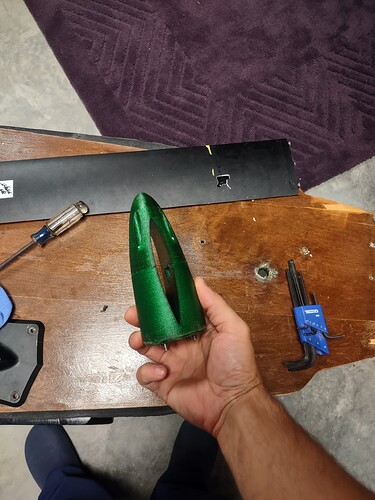PETG. ASA is a pain to get it right.
I used some pla i had and some cracks developed.
Ive seen pla snap between the spool and the printer just by standing there for long enough (weeks), without even touching it (it was a cheaper filament, but still doesnt speak wonders of pla…)
For propellers, esun pla+ works well. Also Used Asa-x covered with cfk for some parts. Advantage of Asa-x is that it is uv resistant. For propellers, it has too much flex. Some people successfully use pet, filed with epoxy for the motor mount.
I prefer a motor mount without printed parts under load.
I have 3 boards with printed motormounts and no issue so far. Under load, the motor is anyway pressing against the mast, so no issue there.
Most critical is the front part: here it is important, that the printing direction is perpendicular to the mast front edge, because this is where cracks develop first. High infill also helps; I typically go with >=80%.
Another option is to laminate the inside of the clamp with glass or carbon; however mine worked without so far. Some checking from time to time doesn’t hurt: One of mine cracked while stored in the cellar for winter…
I had one issue after another with printed materials. I had tried different materials and always had parts break even with solid fill. I took the same drawings and had a machine shop make everything out of aluminum. Big improvement. I get zero leakage and no torque issues breaking internal parts.
Tried PETG against motor, TPU over the mast and PETG or PLA nosecone
Ended up replacing the PETG with TPU against the motor after these pictures, when the PETG cracked.
Nice thing about this is you can replace all the parts without rethreading motor wires through.
Replaced with TPU motor and mast clamp - PLA nosecone

I ordered some parts printed in Nylon off of an HP MJF machine from Hubs manufacturing. Get instant CNC machining, 3D printing & sheet metal fabrication quotes - Hubs You can also order in other materials.
Have been happy with the parts so far. No concerns on strength or longevity. A little heavier than I would prefer, but its a strong connection.
Can you please share your stl file for the motor mount . Thanks v
@vib.dxb I’m not sure which one of us you’re requesting this from, but I’m currently planning to use this motor mount. I’m going to have to modify it so I can run the water cooling intake hose through the nose.
sorry I was asking to brycej for the phot he shared …The design you shared needs 130mm M5 and I have hard time to find them …I only have 100mm lengh so the concept of brycej looks easier …
Hey sorry, missed this message. Here is a link to my motor mount that has been working pretty darn well
https://drive.google.com/drive/folders/1_8IsM6DGIeTbIgT40DYoQuyvxMzkfSiy
Yeah I bet it would work or be close if you print it in TPU. You might need to modify it a bit for that mast. I did share the fusion file if you want to mess with it.
Printed most materials and this is my experience.
PLA - prints great but is not good with temp, so fine under the water but will deform if left in the sun or gets any kind of heat from being in a car. Printing in lighter colors helps, white and bright colors that dont absorb heat from the surroundings with black being the worst obviously
ASA - works great but you have to print in less than about 40% humidity or you get bad adhesion and deformed prints, but has good temp stability if you can get it to print correctly
PETG - prints great and has the best of the above properties with print quality and layer adhesion. This is my current go to for printing with the only consideration to design with layer direction to cater for the loads and that fact it is slightly more brittle than the above.
PU - seems to have really good layer adhesion but you have to make sure the filament is dry. If its not dry will print with a very bubbly surface (you will hear the bubbling/crackling as it prints) and look really bad and have a rough finish and sizes will be out of spec.
I printed my mast clamp with PETG, the front half is 100% infill and the rear piece has 100% infill on the outer shell (0.5cm outer wall 100% infill) with 80% infill on the inside which reduced print time from two days to one day  I’m very impressed with its rigidity, it also has some weight to it! Feels durable, and has survived around 10 hours on the water so far. I can’t remember who I downloaded the file from, but the fit was amazing right off the printer. I had to dremel the hole for the wires just a little to get them through, it’s a tight fit.
I’m very impressed with its rigidity, it also has some weight to it! Feels durable, and has survived around 10 hours on the water so far. I can’t remember who I downloaded the file from, but the fit was amazing right off the printer. I had to dremel the hole for the wires just a little to get them through, it’s a tight fit.
Motor - Flipsky 65121 - Smaller version of the popular 65161 with all the same mounting holes and configuration.
Mast - Gong V1 Aluminum 80cm allvator m70
There are many ways to skin a cat of course but after two years and some different clamp mounts i’ve come to this conclusion:
3d prints can be strong enough but they’re not at their best in continuous loading (like in a clamp) and crack or creep after some time so if you want to save weight and work then the design should preferrably have the load path through other materials. Today i would go this route in preferred order:
- structural clamp parts in alu or stainless steel strip, full length steel screws into motor holes, 3d-printed (cosmetic only) shell cover.
- 3d-printed clamp covered with laminated epoxy and glass fibre shell
- 3d printed clamp shell filled with epoxy plus chopped or continuous fiber. First option for the lazy
 or time critical builds as it’s an easy and functional alternative, though with a weight penalty.
or time critical builds as it’s an easy and functional alternative, though with a weight penalty.
where do you buy that length of stainless steel screws?
